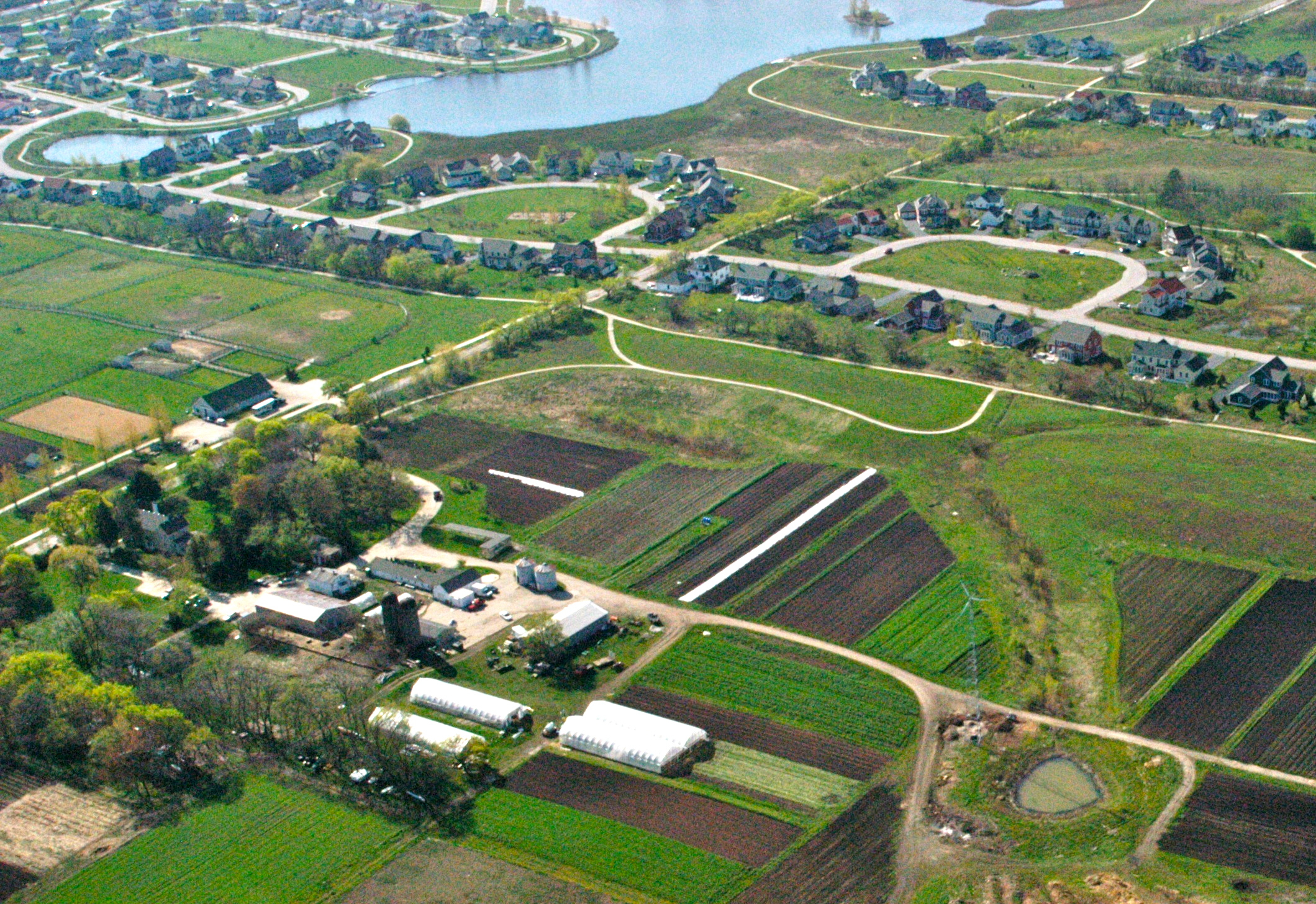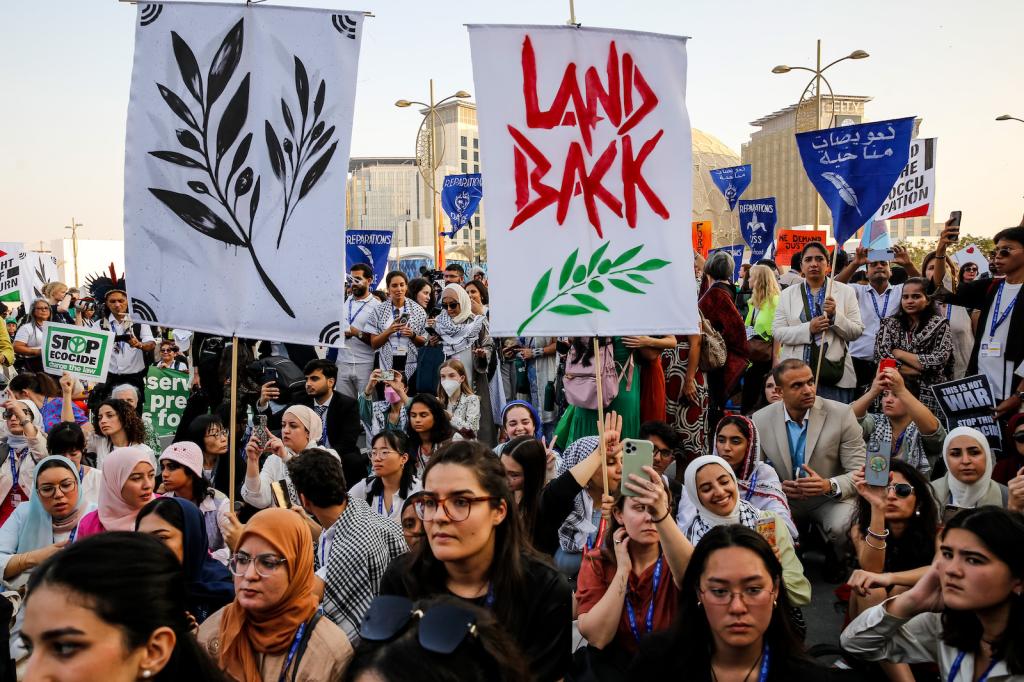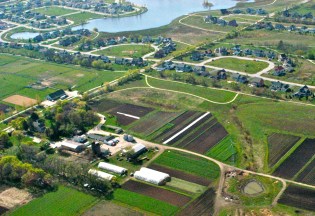
Prairie Crossing is a 669-acre subdivision in Illinois with small lots, 70 percent open space and 100 acres for food production.
It’s a familiar story: A farming family in a small rural town can’t make ends meet. After generations of farming, they’re forced to sell their land and call in the auctioneer. In 2005, I produced a short film about a family like this in Meridian, Idaho. All but one of the five McKay siblings had chosen to work off the farm, and the son who’d stuck around grew sod to sell to developers who were systematically paving over Meridian to make way for residential subdivisions. It was a doomsday view of the future of rural land and farming in this country.
Almost seven years later, the story, on the surface, hasn’t changed. According to the American Farmland Trust, over 4 million acres of agricultural land — almost the size of Massachusetts — were developed between 2002 and 2007. Meridian is now an official suburb of Boise and, despite the Great Recession, small rural towns across the country are still being devoured by urban sprawl. Meanwhile, the urban farm movement is in full swing in cities like San Francisco, New York, and Detroit, and the blighted landscapes of inner cities are increasingly transformed into vibrant plots of vegetables and flowers. Something else is happening too — this renaissance, or reimagining of agriculture, is starting to spill over into the suburbs.
Hyper local in California
At first glance, the maze of freeways 40 miles east of San Francisco is engulfed in rows of track homes, strip malls, and traffic. It’s hard to imagine where the suburbanites who live here might find fresh fruits and vegetables that weren’t trucked in from miles away, but in between the sprawling ranch houses and McMansions, a small farm has sprouted up. Terra Bella Family Farm in Pleasanton, Calif., has found a niche in the middle of subdivisions.
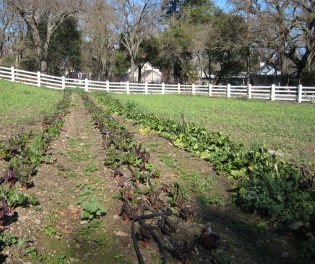
Pleasanton's Terra Bella Farm in winter.
“We have this amazing access to all these people wanting organic, fresh, local, sustainable food and we’re kind of the only ones around,” says Shawn Seufert, farmer and founder of Terra Bella. He says his customers are “super hip people, keen on what’s going on, but they choose to have bigger backyards and send their kids to better schools living out in the suburbs.”
Pleasanton is a city of about 70,000 people, most of whom commute to San Francisco or San Jose. It looks much different today than it did in 1938, when it served as the backdrop to the film version of Rebecca of Sunnybrook Farm. But remnants of farm life are still evident.
Terra Bella has a loyal base of 250 community-supported agriculture (CSA) members, but even with this support, Seufert had to fight to become one of the local farmers at the Pleasanton Farmers Market five years ago. The market already had a tomato farmer who’d been selling there for 20 years. It didn’t seem to matter that he drove 70 miles from Hollister to get there.
Seufert’s rare varieties of tomatoes eventually convinced the Market Association to let him in and now, as the only hyper local organic farm in the area, he is hypersensitive to how he can improve what’s available to his customers. The freshest tomatoes on the block count for a lot, he says. “You can see the fuzz on the tomato and you know it wasn’t bouncing around on a truck or in a cooler or anywhere except from someone’s hand to the basket … ”
Are there disadvantages to being the only farmer in town? Suefert says no. He has access to built-in communities of wealthy residents, and he’s close enough to other farmers to share resources and equipment and experiment with ways of co-branding and marketing each other’s produce. In fact, his goal for this year is to become a hub for products from more rural outlying areas, so his suburban customers can access fresh produce and value-added items that he can’t grow on his farm.
All together, Seufert farms four acres and, after five years, he’s doing well enough to buy a house — a feat many small farmers can only hope to accomplish.
Writing farming into the plans in Illinois
Two thousand miles east of Pleasanton, there’s another revisioned suburbia in Lake County, Ill. Prairie Crossing is a 669-acre subdivision that’s home to Chicago commuters. But instead of the dense clusters of oversized prefabricated houses in a conventional subdivision, Prairie Crossing has small lots, 70 percent open space, and 100 acres for food production.
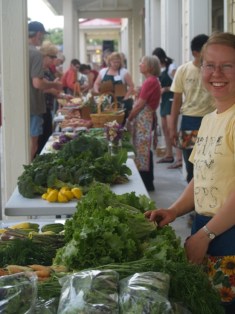
Prairie Crossings farmers make their produce available to the suburban community.
“We think it’s a model for the future,” says Brad Leibov, executive director of the Liberty Prairie Foundation, the nonprofit that runs the Prairie Crossing Farm and focuses on environmental conservation and local food systems. Leibov says the developers of Prairie Crossing believe that a stable source of local food is a necessary part of a sustainable community. The subdivision was the brainchild of a group of concerned citizens who, in the mid-1980s, bought the land from a development company that wanted to transform their rural community into a “cookie cutter” housing project.
But it was a struggle to get to where it is today, says Michael Sands, who runs the Environmental Team for Prairie Crossing. “If [the founders] had had a background in farming, it would have never happened,” he says. “They didn’t know how hard it was going to be, so they were able to push ahead without the negative baggage.”
After legal battles and a failed attempt to preserve the land as open space, the citizens’ group succeeded at creating an alternative to conventional sprawl. With Sands’ expert agricultural guidance, a thriving sustainable agriculture center was formed. It consists of Sandhill Organics, a profitable 45-acre commercial organic farm, a small educational farm, and a farm business incubator program that trains beginning farmers and helps them acquire their own land. The programs aim to attract new farmers with opportunities for financial stability. And, according to Liebov, all three projects give the community an “identity” that is deeply connected to its food source. It’s also good for the bottom line. All home sales were completed in 2005, and sold for roughly 30 percent more than homes in comparable developments. All in all, it’s a phenomenon that led famed New Urbanist architect Andres Duany to declare in 2006 that “agriculture is the new golf.”
Of course, farming and suburban living don’t always mix perfectly. Liberty Prairie Foundation’s report, Building Communities with Farms, outlines some of the challenges of marrying subdivisions and agriculture. For example, developers lose revenue when they use land for farms instead of houses, neighbors complain of farm “nuisances,” and farmers still face the persistent question of how to secure long-term land access.
But both Prairie Crossing and Terra Bella Family Farm have figured out something the McKays in Meridian couldn’t — how farmers and suburbanites can coexist. As Shawn Seufert says, they’re “a bridge and a tunnel” closer to each other — a notion that might one day even make the suburbs more sustainable.

